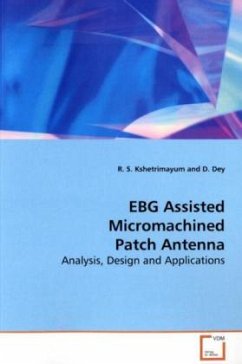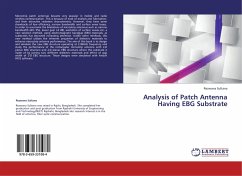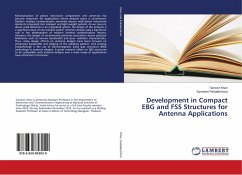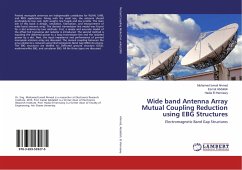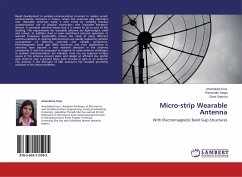Patch antennas with bulk micromachined GaAs
substrate suitable for on-chip
integration with active devices are investigated.
Advantages of such integrated antennas are increased
bandwidth, improved efficiency, etc. Micromachining
reduces the surface wave generation whereas
Electromagnetic bandgap (EBG) blocks the surface
wave propagation. Surface wave is the main hurdle
for patch antennas printed on high permittivity
substrate used for MMICs like GaAs, Silicon. We have
demonstrated that using EBG structure with
micromachining on the same GaAs substrate increases
the antenna performance significantly. It has been
observed that the bandgap diagram for EBG structure
in the ground plane is different from the bandgap
diagram for EBG structure in the substrate. A new
bandgap diagram for EBG structure in the ground
plane is obtained. Then, EBG structures in the
ground plane and substrate are integrated. It shows
a considerable improvement in the EBG performance
with an increased EBG bandwidth, deeper and smoother
insertion loss in the EBG frequency range.
substrate suitable for on-chip
integration with active devices are investigated.
Advantages of such integrated antennas are increased
bandwidth, improved efficiency, etc. Micromachining
reduces the surface wave generation whereas
Electromagnetic bandgap (EBG) blocks the surface
wave propagation. Surface wave is the main hurdle
for patch antennas printed on high permittivity
substrate used for MMICs like GaAs, Silicon. We have
demonstrated that using EBG structure with
micromachining on the same GaAs substrate increases
the antenna performance significantly. It has been
observed that the bandgap diagram for EBG structure
in the ground plane is different from the bandgap
diagram for EBG structure in the substrate. A new
bandgap diagram for EBG structure in the ground
plane is obtained. Then, EBG structures in the
ground plane and substrate are integrated. It shows
a considerable improvement in the EBG performance
with an increased EBG bandwidth, deeper and smoother
insertion loss in the EBG frequency range.

